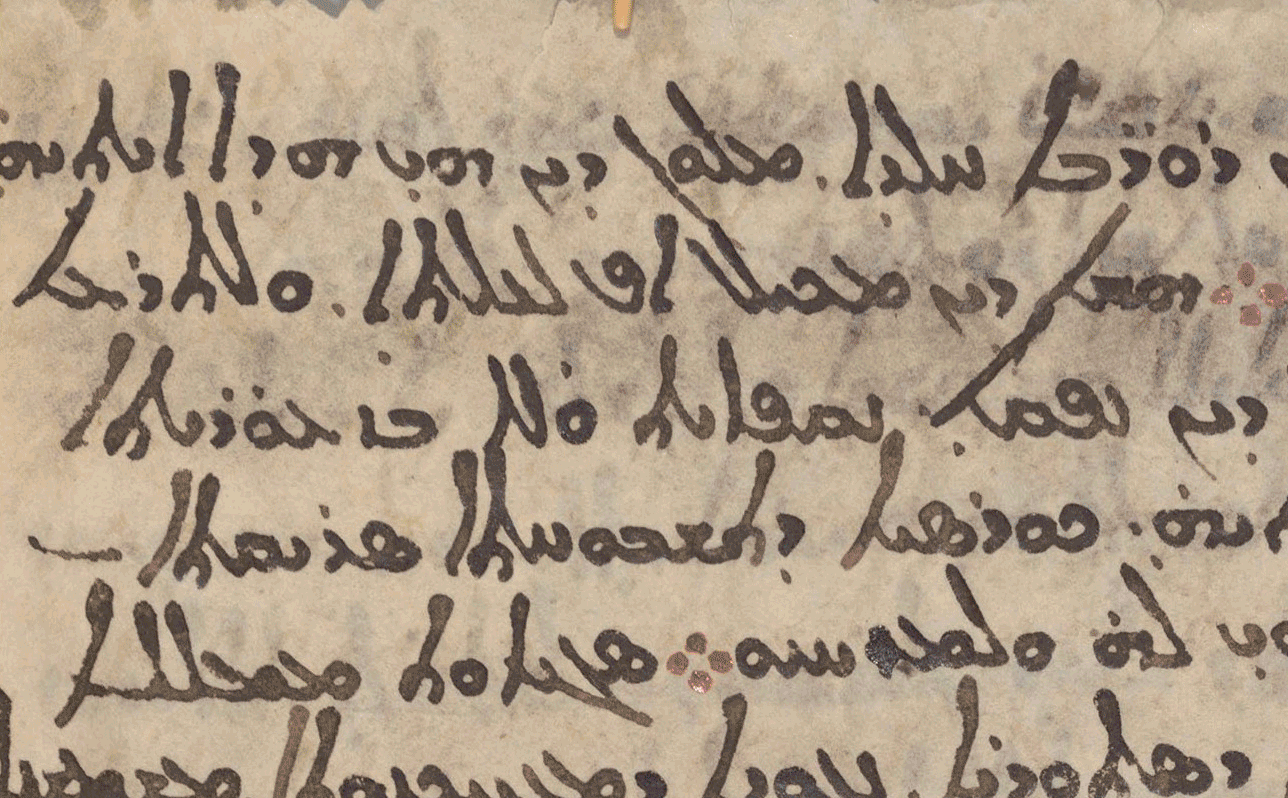History of Science
Building Used by Marie Curie Saved From Demolition
Cultural heritage supporters are hoping to see the facility listed as a protected site
This Device Might Be England's Oldest Dated Scientific Instrument
The 712-year-old artifact is a horary quadrant, a medieval tool used to tell time based on the position of the sun
The 'Comet of the Century' Failed to Impress, but It Wasn't Such a Disaster After All
Highly anticipated before its arrival in late 1973, Kohoutek became an interplanetary punchline. But astronomers may have gotten the last laugh
Modern Medicine Traces Its Scientific Roots to the Middle Ages
Contrary to popular belief, early medieval doctors relied on rational deduction to understand and treat disease
New Synthetic Horseshoe Crab Blood Could Mean Pharma Won't Bleed the Species Dry
The “living fossils” have been vital for testing intravenous drugs, but a few large pharmaceutical companies are using a lab-made compound instead
How to Watch the Draconid Meteor Shower This Weekend
Though it’s usually a smaller display, the Draconids have historically produced breathtaking outbursts of shooting stars known as "meteor storms"
How Rare Is the 'Super Blue Moon' Appearing in Skies Later This Week?
And why do they even call it a "blue moon" when it won't actually be that color?
Students Unearth Forgotten 142-Year-Old Observatory Buried on Michigan State's Campus
Archaeology students have been working at the site since workers happened upon it in May
See Tables Crafted From Human Tissue, a Toad With Eggs on Its Back and More at This London Museum
The newly reopened Hunterian Museum acknowledges the ethical quandaries posed by its collection of anatomical specimens
What We're Still Learning About Rosalind Franklin’s Unheralded Brilliance
Using new historical evidence, two scientists argue the female chemist was more involved in discovering DNA's structure than she got credit for
Henrietta Lacks' Virginia Hometown Will Build Statue in Her Honor, Replacing Robert E. Lee Monument
Lacks' unique cancer cells were taken without consent and used for medical breakthroughs
Divers Accidentally Find a Piece of the Challenger Space Shuttle
A documentary film crew stumbled across a section of the destroyed spacecraft that measures at least 15 by 15 feet
Charles Darwin's Rare Autographed Manuscript Could Sell for $800,000
The English naturalist was responding to a magazine editor who had asked for a handwriting sample
A Medieval Manuscript Has Revealed the Oldest Known Map of the Stars
Advanced imaging uncovered part of the Greek astronomer Hipparchus’ long-lost star catalog
Breaking Down the Quantum Research That Earned Three Physicists the Nobel Prize
What they revealed could enable ultra-secure computing and new telescope technology
What You Need to Know About the History of Monkeypox
Mired in misconception, the poxvirus is endemic in certain African countries but was rarely reported in Europe and the U.S. until recently
Exhibition Explores the Art and Science of Cancer—and the Hope of a Future Without It
The Science Museum in London explores the past and future of the disease, and the resilience of its survivors
Five Things to Know About French Enlightenment Genius Émilie du Châtelet
She was brilliant and unconventional, but her life had a tragic end
Iconic Portrait of French Chemist and His Wife Once Looked Entirely Different
Jacques-Louis David's 1789 painting originally depicted Antoine and Marie Anne Lavoisier as wealthy elites, not modern scientists
Letter From 'Father of Vaccination' Edward Jenner Sold at Auction
Jenner wrote that new research 'put a stop to the sneers' of 'little minded persons'
Page 2 of 6
:focal(1845x1370:1846x1371)/https://tf-cmsv2-smithsonianmag-media.s3.amazonaws.com/filer_public/ee/02/ee02955c-a636-4f45-ace5-8c12b08504ef/gettyimages-613462004.jpg)
:focal(2000x2000:2001x2001)/https://tf-cmsv2-smithsonianmag-media.s3.amazonaws.com/filer_public/e7/40/e740caf9-626a-495c-91d4-8f2f3acc3a64/quadrant____-_copy.jpg)
:focal(700x527:701x528)/https://tf-cmsv2-smithsonianmag-media.s3.amazonaws.com/filer_public/4a/9b/4a9bd511-228b-4569-ab1e-a8ceebffb0d7/kohoutek3.jpg)
:focal(700x527:701x528)/https://tf-cmsv2-smithsonianmag-media.s3.amazonaws.com/filer_public/ce/b6/ceb64f57-8510-4d00-a71d-47a68fe6d9f6/manuscript.jpg)
:focal(512x349:513x350)/https://tf-cmsv2-smithsonianmag-media.s3.amazonaws.com/filer_public/48/11/4811c219-7a18-485d-8d48-232104b8460d/gettyimages-1241981966.jpg)
:focal(1060x711:1061x712)/https://tf-cmsv2-smithsonianmag-media.s3.amazonaws.com/filer_public/e9/1b/e91bde8d-41cf-4087-bbbf-d1b0fb37221d/gettyimages-976216668.jpg)
:focal(1024x541:1025x542)/https://tf-cmsv2-smithsonianmag-media.s3.amazonaws.com/filer_public/1e/f7/1ef72aa5-b7ea-4349-854e-d1f7fadd8241/49641911586_af5537a2ea_k.jpg)
:focal(750x500:751x501)/https://tf-cmsv2-smithsonianmag-media.s3.amazonaws.com/filer_public/09/c6/09c6c71c-ca3d-476f-840d-1181e2553054/historicalphotoofmsuobservatory.jpg)
:focal(700x527:701x528)/https://tf-cmsv2-smithsonianmag-media.s3.amazonaws.com/filer_public/03/2f/032fd5fb-7bbe-4b1f-9cf8-5c16ede4f05f/skin-table.jpg)
:focal(1976x2166:1977x2167)/https://tf-cmsv2-smithsonianmag-media.s3.amazonaws.com/filer_public/ba/46/ba46c84b-8428-4a63-9257-b2af7c588758/gettyimages-590675971.jpg)
:focal(2742x1854:2743x1855)/https://tf-cmsv2-smithsonianmag-media.s3.amazonaws.com/filer_public/95/1a/951a2166-1675-4504-bc5a-eb987b443245/gettyimages-1234369528_1.jpg)
:focal(400x225:401x226)/https://tf-cmsv2-smithsonianmag-media.s3.amazonaws.com/filer_public/39/f8/39f860d4-69f2-4858-8db3-131af5640a34/resized_challenger_image.jpg)
:focal(2160x1440:2161x1441)/https://tf-cmsv2-smithsonianmag-media.s3.amazonaws.com/filer_public/00/44/004485d0-cb08-40b2-a8b8-621831cf7547/092322-mfm-darwin-004_1.jpg)

:focal(2933x1941:2934x1942)/https://tf-cmsv2-smithsonianmag-media.s3.amazonaws.com/filer_public/7a/33/7a33333c-2490-4ac6-b89c-898ed3a07f42/gettyimages-1243716108.jpg)
:focal(1024x790:1025x791)/https://tf-cmsv2-smithsonianmag-media.s3.amazonaws.com/filer_public/ea/1a/ea1a3aa3-62ff-4389-a6a6-fc0c179562b3/52096775365_47a17637ba_k.jpg)
:focal(4128x2752:4129x2753)/https://tf-cmsv2-smithsonianmag-media.s3.amazonaws.com/filer_public/75/48/7548b9ed-9f4c-4ffa-87a5-5d18800d7739/visitors_looking_at_sculpture_by_skellon_studio_in_cancer_revolution_at_the_science_museum__science_museum_group.jpg)
/https://tf-cmsv2-smithsonianmag-media.s3.amazonaws.com/filer/b0/e8/b0e803bb-64a4-4ac8-931c-001213934eb9/emilie_chatelet_portrait_by_latour.jpg)
:focal(411x289:412x290)/https://tf-cmsv2-smithsonianmag-media.s3.amazonaws.com/filer/eb/8d/eb8d6a10-1db4-49f6-a12c-570c79729959/fdasfsdfdsaf.jpg)
/https://tf-cmsv2-smithsonianmag-media.s3.amazonaws.com/filer/d3/6c/d36c57f5-5d0c-4288-988f-9940fed6ce56/jenner_letter.jpg)